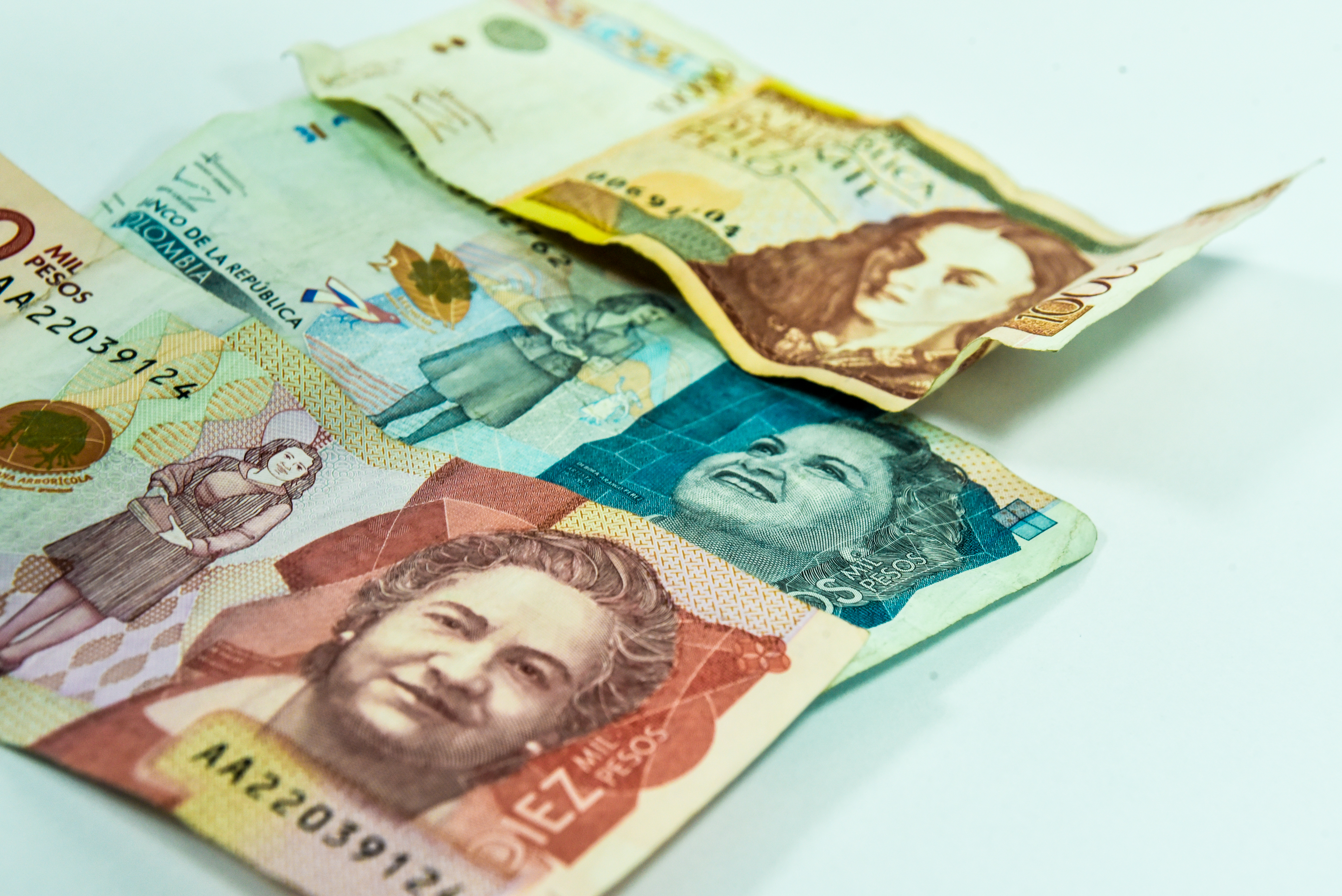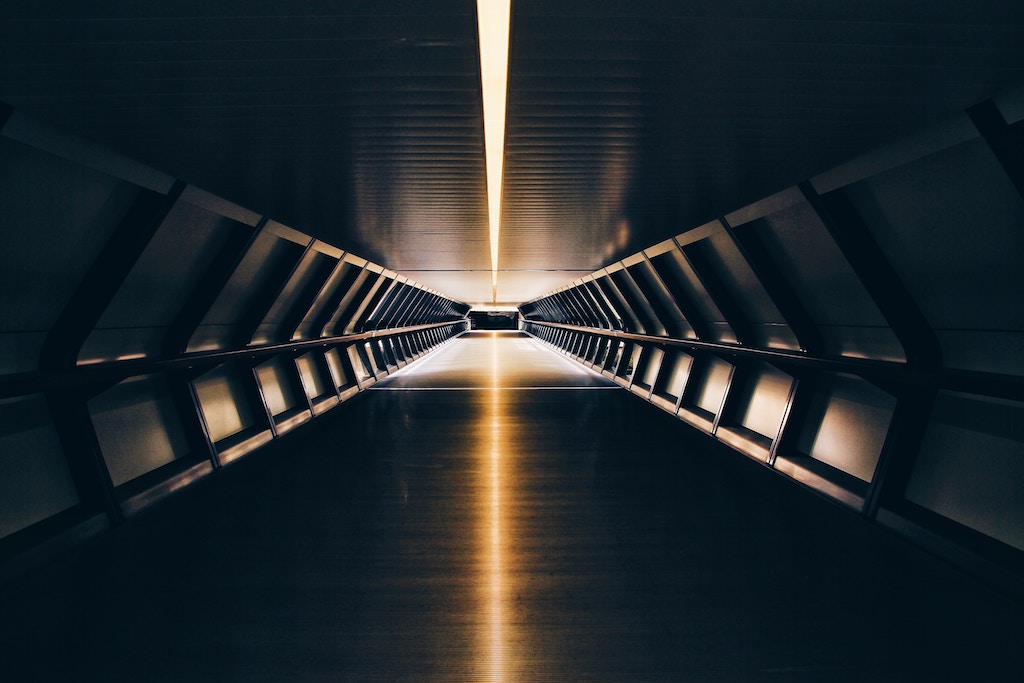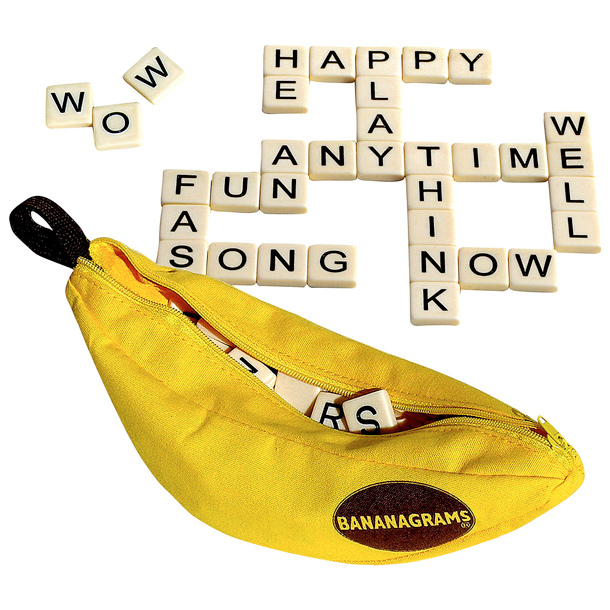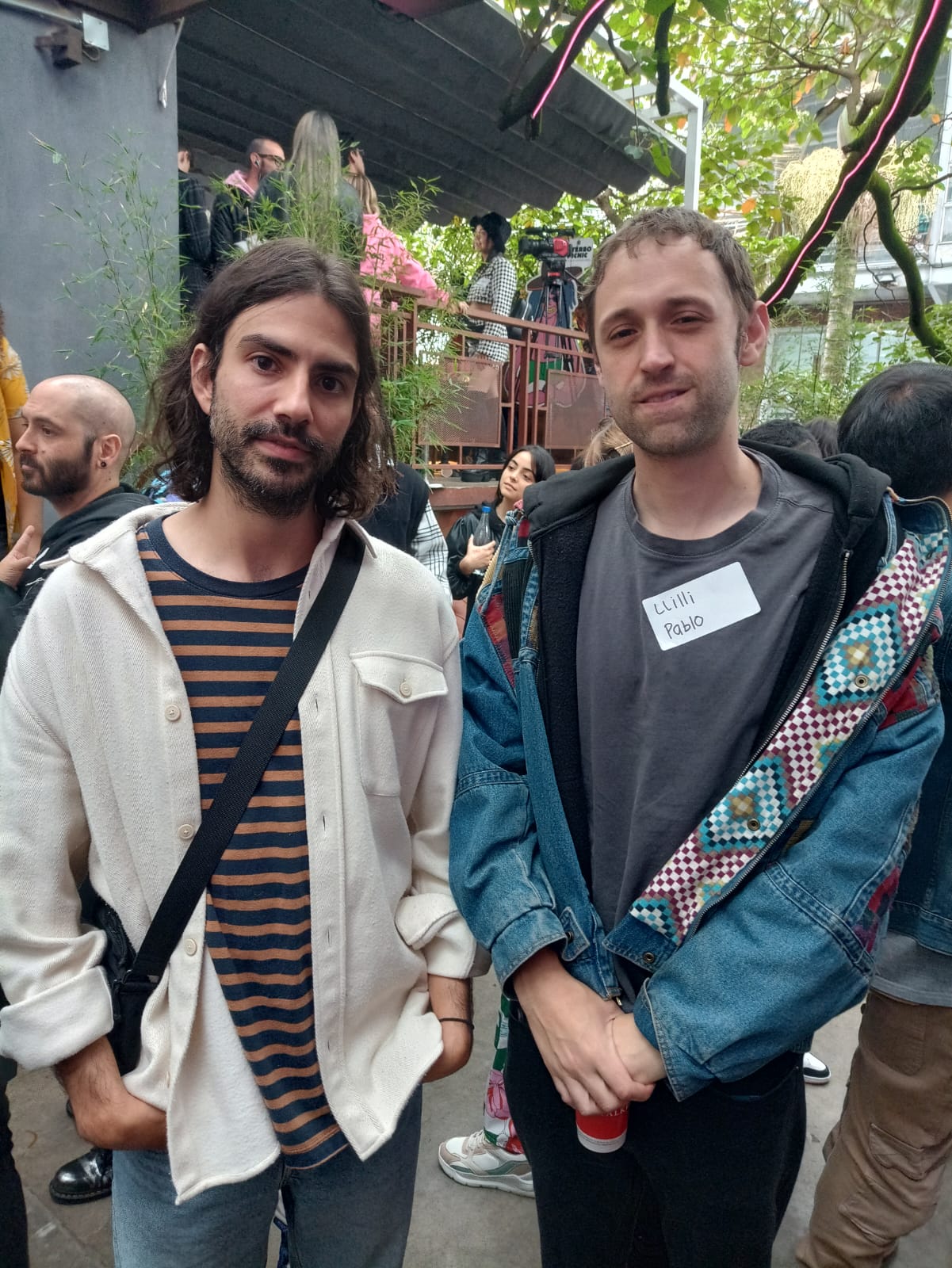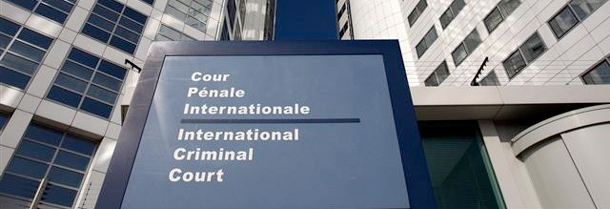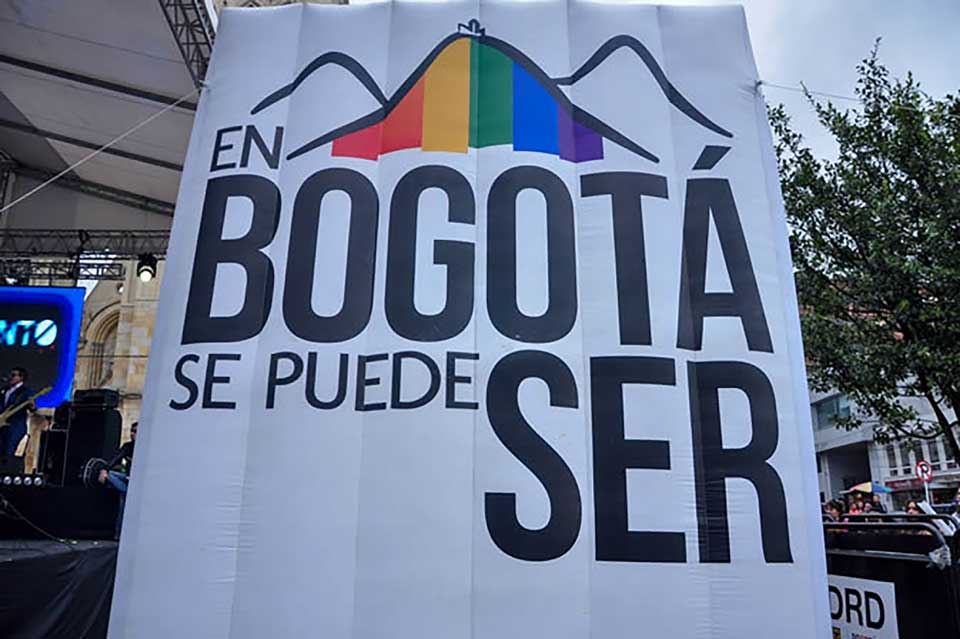
Bogotá is placing itself as a ‘go to’ city for LGBT tourism.
As Bogotá begins to market itself as an emerging capital of LGBT tourism, Christopher Outlaw wonders what exactly ‘LGBT tourism’ means, why it’s worth promoting, and what the city has to offer.
Bucking the trend after decades of bad press, Colombia is currently enjoying a well deserved reputation as an awesome place for a holiday. Praise from global newspapers and high profile travel guides have helped, as have the Colombian Ministry of Tourism’s ad campaigns. International tourism trade fair FITUR chose Colombia as the best LGBT tourism destination in 2017.
As the world wakes up to the joys the country has to offer, Bogotá businesses and local government are starting to promote the city as an LGBT (lesbian, gay, bisexual and transgender) tourism destination. Sadly the planned LGBT Confex – a forum for LGBT tourism and business professionals which was to be hosted in Colombia for the first time this month – was cancelled at the last minute with scant explanation.
But what does LGBT tourism mean, why is it worth promoting, and what does Bogotá have to offer? This article will also look at how to spend a safe and comfortable LGBT holiday in Colombia, providing some helpful links at the bottom!
What is LGBT tourism?
Some might question why in 2017 it’s necessary to use labels like LGBT tourism. However, there are clear distinguishing factors.
LGBT people’s interests and tastes are, of course, as diverse as anyone else’s. Travel websites aimed at the community tend to emphasise culture, gastronomy, shopping and beaches alongside the obvious, but not necessarily fundamental, ‘gay scene’.
Statistics from the US suggest that lesbians and gay man travel abroad more often than heterosexuals and that on average same-sex couples have higher disposable incomes. Felipe Cárdenas, from Bogotá’s LGBT Chamber of Commerce (CCLGBT), an organisation which trains and certifies businesses as LGBT-friendly among other things, argues that these factors make LGBT tourists more discerning in their choices. He says they are “experts in filtering their options, […] they have high standards as consumers.”
A defining feature of LGBT tourism – and the one with the potential to greatly influence travel choices – is the desire to feel safe, comfortable, respected. In short, to spend a holiday free from discrimination. This includes the legal right to be openly LGBT in the destination country as well as social attitudes there.
As John Tanzella from IGLTA – an international network for the LGBT tourism industry and travellers – puts it, LGBT holidaymakers place great importance on “finding businesses and destinations that will treat them equally and deliver a warm welcome. They don’t want to feel uncomfortable or worse.”
LGBT travellers are not necessarily any less adventurous in their tastes, but destinations which provide a safe environment have a clear advantage in attracting them. Over 70 countries still criminalise homosexual activity and no one wants to be denied a double room, let alone arrested – not to mention executed – for sharing a bed with their same-sex partner. Many transgender people have travel documents which don’t match their gender identity, and practical issues like access to unisex toilet facilities are important for trans tourists.
So, what does Bogotá have to offer?
Elsewhere in Colombia, IGLTA recommends Cartagena’s “history and architecture” and the CCLGBT suggests Medellín for nightlife and fashion, as well as Barranquilla as an emerging LGBT destination.
But Tanzella says Bogotá stands out because of its “food and gay nightlife”. The city is home to a thriving gay scene – the country’s largest. It is centred in Chapinero, where the behemoth Theatron is a must for visiting LGBT and straight carousers alike with its open bar and array of music genres with over a dozen separate ‘ambiences’. Other popular nightclubs such as El Mozo and Cavú are complemented by more relaxed diurnal venues like Café Estación and El Recreo de Adán, where you can combine cocktails with board games, lounge on beanbags and sing karaoke. There’s also an LGBT bar crawl which visits three locales in Chapinero.
The ‘gay scene’ is certainly not to every LGBT traveller’s taste but – as pointed out by one gay tourist – its existence in a city is a reassuring bellwether even if it holds no interest in itself.
The Bogotá’s official Instituto Distrital de Turismo (IDT) also offer specific LGBT tourism advice, such as what areas are LGBT-friendly and other recreational activities. They cite central Chapinero, the Zona Rosa and Parque 93, Zona G, Usaquén, Teusaquillo, and Avenida Primero de Mayo as LGBT-friendly neighbourhoods. The IDT also highlights the parks and countryside around Bogotá and activities such as the weekly ciclovía and popular flea markets, art galleries, and music festivals.

Bogotá is seen as a relatively tolerant city in Latin America towards LGBT rights.
In terms of the other key ingredients – gastronomy, history and culture, shopping – the Colombian capital has a wealth of options. The restaurant scene here has advanced massively in the last couple of years and continues to diversify. The Zona G is Chapinero’s gastronomic heart, with top quality eateries from around the world. La Macarena, Usaquén, and La Candelaria are also known for their cuisine.
As for shopping, centros comerciales are found in abundance and visiting a shopping centres could even be considered a cultural experience, given their huge popularity with locals! The more modern and up-market are Andino, Unicentro, and Titán Plaza.
History buffs will be delighted by the colonial architecture of La Candelaria as well as world-class museums such as the stunning Museo del Oro stuffed with precolumbian gold artefacts. The city has a wealth of art galleries (the Botero collection being particularly succulent), as well as theatres and music venues – check out our listings!
As for hotels, while La Candelaria has a range of hostels and boutique hotels, Chapinero and Teusaquillo are much better placed, and still within easy distance of the historic centre. Chapinero is a good bet for those interested in nightlife, food, shopping, saunas and feeling a bit more relaxed. It’s where most of the gay bars are, and the area where you’re most likely to see same-sex couples holding hands in the street.
LGBT events are also increasing in number and diversifying. Pride Weekend, including a march along séptima, is held every year in June or July, when there are also drag queens galore at Theatrón’s Miss Gay International. Then there’s Barraca Teatro’s ‘pink theatre’ festival in August and the Cinemateca Distrital hosts an annual LGBT cinema cycle in September. Kuir Bogotá explores gender and sexuality through art and film in November.
The CCLGBT sees great potential, describing Bogotá as “undoubtedly the emerging LGBT tourism capital of Latin America, with its great selection of entertainment both day and night in [specifically LGBT] and LGBT-friendly venues… accommodation, gastronomy, art, culture, shopping and an excellent exchange rate!”
Safety and comfort
Being LGBT in Colombia is, of course, far from entirely rosy. Public displays of affection between same-sex couples are uncommon in most of Bogotá and coming out to family members and colleagues is generally not easy for LGBT Colombians, who worry about discrimination. Attitudes are changing in this traditionally conservative, machista society. Public awareness of LGBT issues is low, but rising according to the Secretaría Distrital de Planeación, as is acceptance of the community. Nearly three quarters of men who responded to a recent survey by gay social networking app Grindr said they are out to their parents, with a majority of those saying their parents are now accepting of their sexuality.
Hate crime occurs, as everywhere, but there are mechanisms for reporting it and it is against the law. Reports of homophobic attacks on tourists are hard to find and there is a dedicated tourist police. Sadly, LGBT activists have been among the victims of attacks against human rights defenders in recent years. Nevertheless, the current national and capital district administrations actively pursue LGBT-friendly policies – including the slogan “In Bogotá You Can Be” – and being openly LGBT in Bogotá is, anecdotally at least, more common and easier than in large cities in neighbouring Andean and Central American countries.
Knowledge about transgender issues and facilities for trans tourists lag behind somewhat, but here things are changing, too. A few years ago it was made easier for transgender Colombians can change the sex stated on their ID cards and awareness has risen recently with well-reported moves by Externado University to introduce unisex restrooms.
Human rights organisation OIDHACO recalls that last year’s Havana Peace Accords – aimed at bringing an end to the decades-long conflict between the Colombian government and the FARC guerrilla group – contains a commitment “to address the longstanding inequality of the lesbian, gay, bisexual, transgender and intersexual population.”
For extra reassurance, the CCLGBT has a directory of businesses friendly to LGBT tourism, including hotels, which potential visitors can consult on their website.
Why do cities want to attract LGBT tourists?
The ‘pink pound’ (relatively high LGBT purchasing power) must have some influence and the whole point of a promotional campaign is to bring in tourist cash. But it’s overly cynical to suggest this as the only motivation. ‘Dorothy dollars’ could benefit the economy in any number of cities, but we don’t see official campaigns from Moscow or Tehran so there must be some ideological commitment here. Indeed, compared with other Latin American nations, Colombia – and in particular Bogotá – has a respectable history when it comes to LGBT rights legislation and court rulings, in spite acts of violence against members of the LGBT community during Colombia’s long years of internal conflict. Anti-discrimination laws have been strengthening since 1999, same-sex couples have been able to marry in the country since 2016 and lawmakers recently voted against a motion to hold a referendum aimed at repealing the right of same-sex couples to adopt. You could say that the city authorities are trying to capitalise on a culture which grew on its own. Tanzella mentions a number of “unexpected places” – such as South Africa, Israel, and Japan – where LGBT tourism has grown in recent years. He says that official drives to attract this group often start “with the efforts of business owners and then attract the attention of city governments.”
With people across the globe increasingly attuned to issues of equality, the city’s LGBT friendliness is likely to appeal to heterosexual travellers as well. In fact, Tanzella explains that younger LGBT tourists “are more likely to seek out LGBT inclusive spaces, rather than those that are exclusively gay.”
Useful links:
IDT: LGBT tourism advice from Bogotá’s tourism institute
Bogotá LGBT tourism brochure
Bogotá LGBT tourism map
CCLGBT: Directory of LGBT-friendly businesses
IGLTA: Colombia travel advice

